Researcher/Project Manager/Professional Category
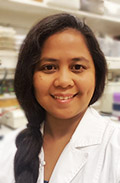 Fritzie Celino-Brady, Laboratory of Fish Endocrinology and Environmental Physiology, UH College of Tropical Agriculture and Human Resources (CTAHR)
Fritzie Celino-Brady, Laboratory of Fish Endocrinology and Environmental Physiology, UH College of Tropical Agriculture and Human Resources (CTAHR)
When tasked with a project or challenge, Fritzie will go to depths at accomplishing it in the best possible way. Her response during the ongoing COVID-19 pandemic has been nothing short of exceptional, as she took the initiative to organize a rotational schedule for laboratory work early-on, working closely with the lab team to ensure all staff were cognizant and compliant with new safety measures and protocols. Her contributions as a research scientist—leading projects, training students, authoring peer-reviewed published manuscripts, grant report and proposal writing—are consistently beyond expectations. In four years, Fritzie has co-authored 16 publications at national and international conferences and published 5 peer-reviewed manuscripts.
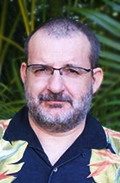
Serge Chastel, Pan-STARRS, UH Institute for Astronomy (IFA)
Serge provides outstanding support for IFA, including troubleshooting support outside of normal working hours, but his most important contribution has been the enormous speed up of processing Pan-STARRS data, which has increased the productivity of Pan-STARRS’ search for Near-Earth Objects (NEOs). His software design and hardware changes have reduced observation processing time from 9 hours to just 30 minutes! This improvement permits quick follow-up of NEO candidates by telescopes west of Hawai‘i and has led to enhanced recovery by telescopes in locations as far away as Europe and Africa, as well as contributing to the high discovery rate of Pan-STARRS, which has made 44% of all new NEO discoveries to date in 2020. Serge has also improved the user interface used by astronomers when reviewing NEO candidates, making this more efficient and intuitive.
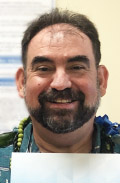 David Cohen, Pacific Cooperative Studies Unit (PCSU), UH College of Natural Sciences
David Cohen, Pacific Cooperative Studies Unit (PCSU), UH College of Natural Sciences
Sea urchins have proved to be successful at controlling invasive seaweed, but prior to 2009 no one in Hawai‘i had successfully spawned and reared sea urchins aside from small-scale laboratory experiments, and certainly not at a production-level scale. In order to create this new sea urchin hatchery, David and his team retrofitted an old shrimp aquaculture facility at the Anuenue Fisheries Research Station. Now approaching its 10-year anniversary, this 24/7 operation has released 600,000 sea urchins in Hawaiian waters and recently expanded to the Waikiki Marine Life Conservation District. Their release has controlled invasive seaweed in over 270 acres of reefs, allowing native species of seaweed, fish, and invertebrates to thrive. It is the single-most successful marine invasive species control project implemented in Hawai‘i to date.
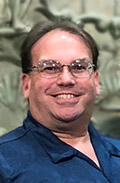 Stan Fichtman, Apprenticeship Programs, Kapi‘olani Community College (KCC)
Stan Fichtman, Apprenticeship Programs, Kapi‘olani Community College (KCC)
Faced with new directives from the Hawai‘i Department of Labor and Industrial Relations due to the COVID-19 pandemic, Stan successfully led his team through a radical change in focus from KCC’s culinary apprenticeship program to its health program. This required rapid adjustments to all expenditures and human resources, a realignment of operations, and development of two new apprenticeship programs to meet the high demand for acute care nurse assistants and medical assistants. With his methodical approach and unwavering leadership, Stan secured a grant extension with the U.S. Department of Labor and received approval by the State Apprenticeship Council. These two new programs have already demonstrated success with a record-breaking 135 new pre-apprentices and apprentices registered in less than two months.
 Mark Huber, Pan-STARRS, UH Institute for Astronomy (IFA)
Mark Huber, Pan-STARRS, UH Institute for Astronomy (IFA)
Mark is the only employee in the Pan-STARRS project who has expertise in multiple data systems: the Image Processing Pipeline, the Transient Object Server, and the Moving Object Processing System. This knowledge has enabled him to find more and more objects at the limit of detection and to improve the system’s sensitivity to faint Near-Earth Objects (NEOs). Recently, Mark discovered almost 1,700 NEO candidates in a matter of a week. As an Astronomical Survey Researcher, Mark led the development of the warp-minus-stack technique of processing images to discover NEOs. This technique uses a stack of images taken over many years as a template, which is then subtracted from the new image. From its first use in October 2019 to today, Pan-STARRS uses this processing technique nightly to allow discovery of fainter NEOs.
 Dawn Namahoe Sidman, UH Hilo Research Office
Dawn Namahoe Sidman, UH Hilo Research Office
Dawn is widely recognized at UH Hilo as the person who has held all of the research support and RTRF allocations together during the past decade through three Chancellors and four Vice Chancellors. She is solely responsible for the fiscal management of UH Hilo’s RTRF account and has developed expertise on fiscal, budgetary, procurement, and personnel-related issues involving RTRF funds during her 15 years in the Office of Research. Dawn’s extensive and historical knowledge ensures compliance with applicable policies, rules, regulations, and systems. She is often called upon to provide fiscal projections and possible scenarios on short notice involving RTRF funds and to provide suggestions for solving problems that can perplex PIs and senior administrators. Dawn also trains incoming support staff and consistently goes above and beyond to move projects in a timely manner.
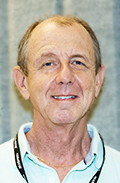 Michael von Platen, Telehealth Research Institute, UH John A. Burns School of Medicine (JABSOM)
Michael von Platen, Telehealth Research Institute, UH John A. Burns School of Medicine (JABSOM)
As a TCR Systems Programmer, Michael single-handedly designed and coordinated the transition and integration of a complex audio-video system for simulation-based education. This impacted the entire JABSOM student body in preparedness for a critical national qualification examination. Because the $300,000 project was beset by multiple vendor-based technical problems, it took Michael’s leadership to coordinate a resolution process involving multiple JABSOM departments, while still assuring full functionality for mission-critical day-to-day educational activities. His forward thinking allowed a significant portion of the curriculum to be transitioned to e-learning, which became critical during the COVID-19 work-at-home restrictions.
